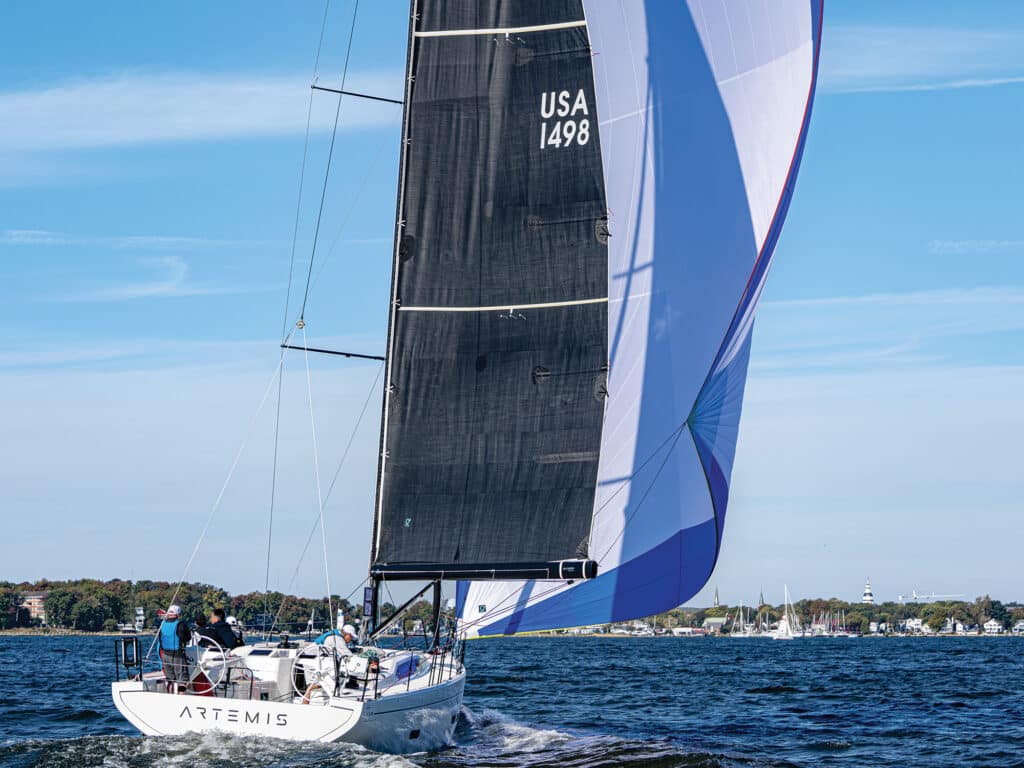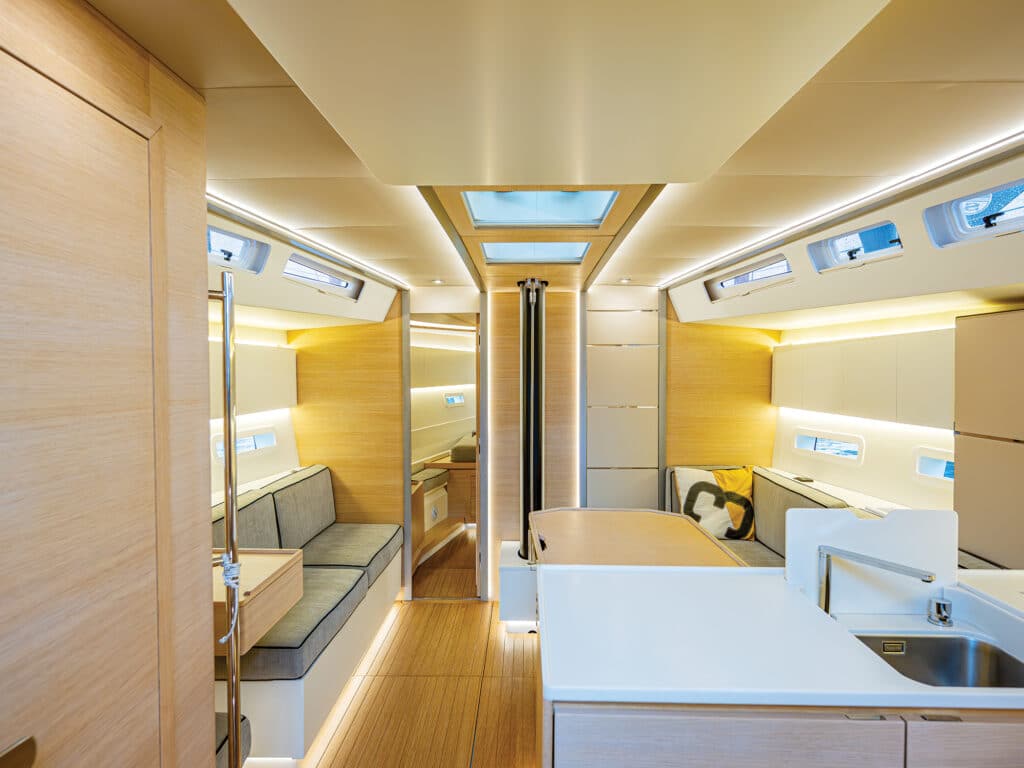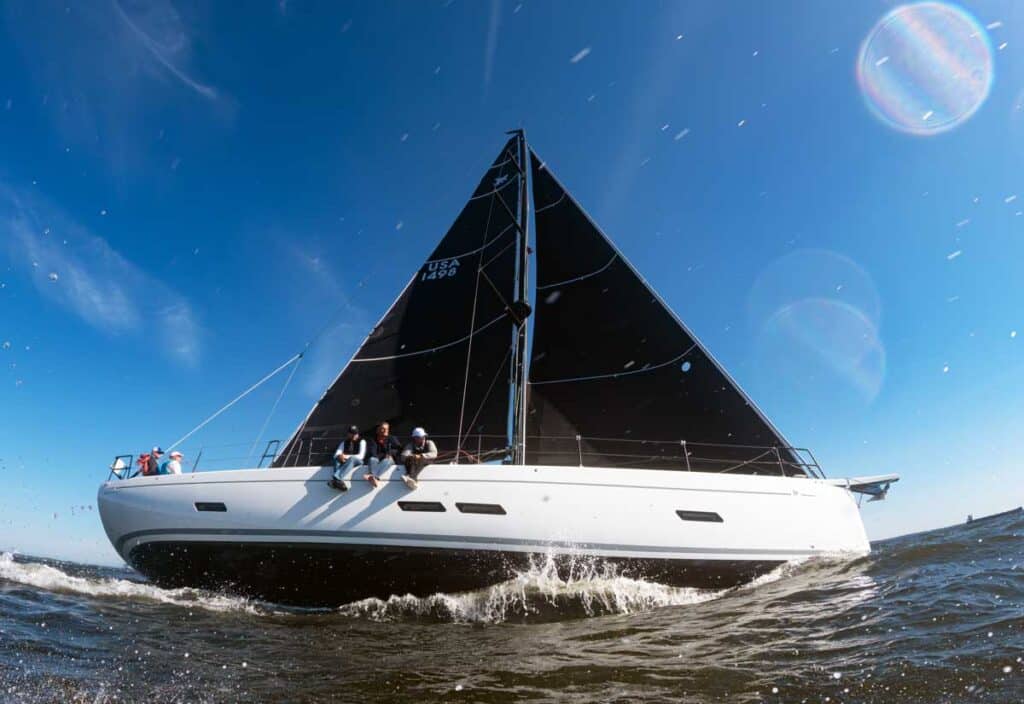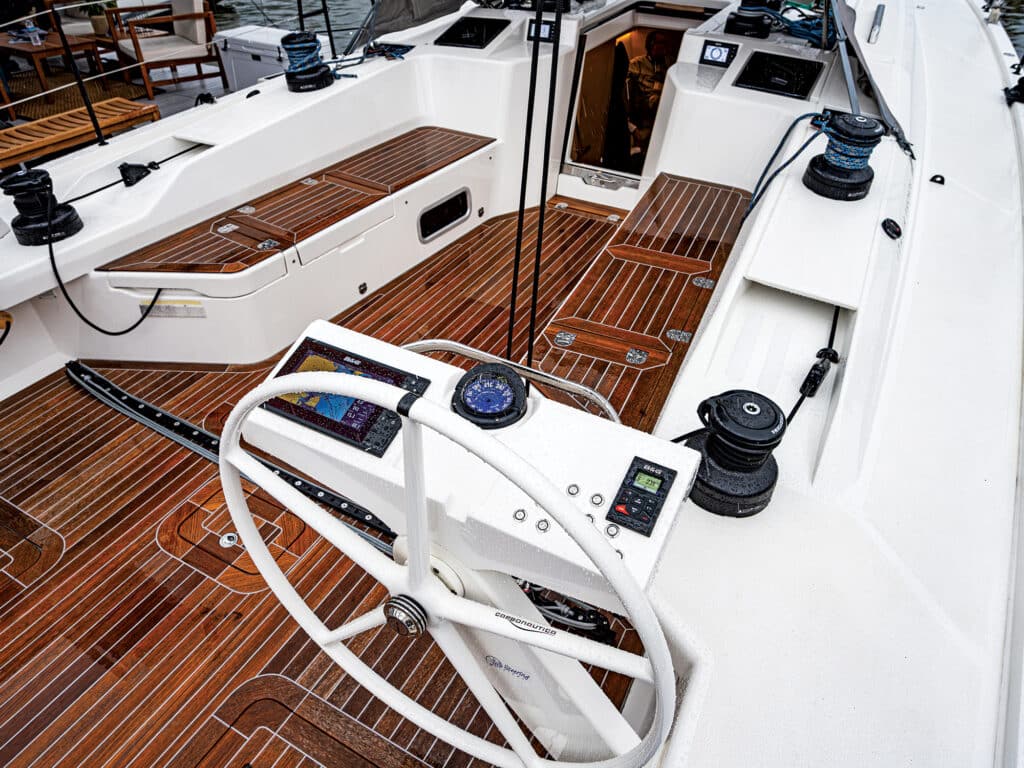
Die-hard racers and cruisers alike have strong opinions about what makes the ideal dual-purpose boat, a debate that has endured for as long as builders have been putting furniture into race boats. While it is true there’s no such thing as a perfect crossover, the Italia 14.98 comes pretty darn close as far as our Boat of the Year judges are concerned. This year’s Best Crossover, they say, is a beautifully styled and practical yacht that presented and sailed superbly.
Italia Yachts and its ever-expanding lineup is a relatively new brand to the US market, but it is well-established in Europe, where other Italia models have been hoarding the ORC world titles of recent. There’s an undeniable winning pedigree here, and the Italia Yachts 14.98 continues the lineage.
While it’s a production boat, there’s nothing cookie-cutter about this semi-custom Italian-built yacht. Artemis, the Italia 14.98 presented to the judges for Boat of the Year in Annapolis, is hull No. 7. It is owned by a highly experienced couple from Annapolis and expertly maintained. Even with a full season of racing and cruising under its hull, the boat was showroom-quality. The judges each noted it was impossible to discern it had been through the ringer a few times with a race crew, as well as a few summer cruises with the owner’s tribe and family dog.
The boat is accessorized with a lot of cruisy extras: air conditioning, anchors, alternators, a watermaker, and an array of electronics and communications systems, including a Starlink terminal. But 1,000 pounds or more of accessories didn’t seem to slow down the boat one bit on the breezy test sail.

“It’s a beautiful sailing boat,” was judge Mike Ingham’s assessment after two long sailing sessions—one a light-air drifter and a redo the next day in a puffy 15-knot breeze. “It felt great for a boat its size and so fully loaded. Even when the breeze was pretty light, it would just accelerate and go.”
The boat’s vacuum-infused construction, the judges noted, is custom-quality, and the interior finish is flawless. Even after a deluge of a rainstorm on the day of their dockside inspection, the bilge was bone-dry. To eliminate potential leak points and avoid a ceiling full of exposed fasteners, the boat’s winches, clutches and most deck hardware components are threaded into backing plates bonded into the deck.

Once under sail, the judges immediately appreciated the hull’s stiffness, a result of what the builder describes as essentially one monolithic structure. With a robust carbon keel grid, carbon longitudinal stringers, and Y-shaped chain plate stringers tied into the grid, the hull is plenty solid and light at nearly 25,000 pounds. Artemis is a slightly heavier Bellisima model of the 14.98, and sails with an ORCi rating of 484.1 and a PHRF Chesapeake rating of 6. (The Fuoriserie model is longer and lighter.)
“It definitely has a big-boat feel—nice and solid and stiff,” Greg Stewart says. “This boat’s ORC certificate has its limit of positive stability at 122.3 and its stability index at 130.5, so that’s really good. The Bermuda Race entry limit is 115, so this boat feels like it should—a good, stable and stiff platform. It felt really lively, even in the light stuff.”
The standard keel draft is 8 feet, 4 inches, with a torpedo bulb and stainless-steel fin, but shoal and deeper draft options are available. The standard rig is an aluminum Selden section with rod rigging, but a Hall Spars or Axxon Composites carbon rig is an option, as are “boomerang” carbon spreaders and EC6 rigging.

The deck layout is straightforward and clean, with halyards and a control line running aft under channel covers. Reinforced tack points on the bow accommodate staysails, and there are longitudinal jib tracks with an inhauler system. Hidden under a foredeck plate is a trough for an optional self-tacking jib track.
Judge Chuck Allen was mostly impressed with the 14.98’s performance upwind. His assessment is the boat “has a really nice groove. It is easy to access all the controls, and the winches are set up well for racing.”
Artemis has a six-winch configuration, but the cockpit accommodates an eight-winch setup should an owner opt to go with backstays. “It was presented with an A3 [spinnaker], which is a pretty small kite,” Allen says, “but it’s easy to jibe and get the boat to reset quickly. The boat responds instantly to crew weight movements too. We could really feel the difference as we moved people around.”
Stewart agreed, adding that the hull profile is both powerful and slippery, with some underwater magic that Italia’s designers have utilized and the ORC rule seems to favor. An unmistakable design trait of the Italia 14.98 that separates it from other wide and hard-chined transoms common today, Stewart says, is that it is “wide in the back end, but the corners are well-rounded. It has some rocker, so you don’t have big corners that dig and make all that turbulence. With this boat, you don’t hear anything back there, and the water releases beautifully.”
A quiet ride on deck means a peaceful ride below for off-watch crewmates and family members, who will no doubt enjoy the experience of knocking off fast sea miles surrounded by a bright and expansive interior that’s as easy to move about and live in at sea as it is at the dock. The family will enjoy the luxury as much as the race crew enjoys taking line honors—a true measure of a proper crossover.









